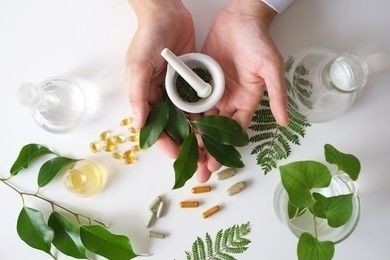Non-Destructive Testing of Herbal Medicines Quality
Inquiry
There are two main types of methods for testing the quality of herbs, namely destructive testing and non-destructive testing. Destructive testing is a conventional method, including gas chromatography (GC), high-performance liquid chromatography (HPLC), HPLC-mass spectrometry (MS), etc. These methods can test the quality of herbs, but the testing period is long, the cost is high, and it is destructive to the herbs, so it is unsuitable for rapid on-site testing. Lifeasible has introduced non-destructive testing (NDT) techniques, including X-ray, computer vision, nuclear magnetic resonance (NMR), near-infrared spectroscopy (NIRS), hyperspectral imaging, and terahertz spectroscopy to provide you with non-destructive testing of herbs.

X-ray technology allows qualitative and quantitative analysis of the quality of herbs, and its high speed of detection allows for the internal visualization of herbs.
- Computer vision technology
This technique detects the quality of herbs by capturing the microscopic texture, shape, and color of the herbs. We can input herbal herb sample traits and vascular tissue characteristics parameters into a back propagation neural network (BPNN) model for pattern recognition, with an average recognition rate of 100%. Color is also an essential element of herbal quality standards. We can provide you with a digital camera box to capture images of herbs and select color features for input into discriminant factor analysis (DFA), support vector machine (SVM), and principal component analysis (PCA) discriminant models to digitally differentiate herbs.
NMR techniques are powerful tools for evaluating the quality of herbal materials, not only for full-component fingerprinting studies but also for determining the component content of herbal materials. We used 1H-NMR and qNMR techniques to collect information on herbal materials. We used hierarchical cluster analysis (HCA), PCA, partial least squares-discriminant analysis (PLS-DA), and orthogonal partial least squares-discriminant analysis (OPLS-DA) in chemical pattern recognition for identification.
This technique can be applied to herbal medicine authenticity identification and origin analysis. We have used the NIRS technique in combination with computational software to build models for identifying various herbs. The spectra are processed by first-order derivatives and vector normalization and then fed into standard algorithms and factorization methods.
- Hyperspectral imaging technology
This technique can image samples at selected wavelengths and can accurately reflect the physical and chemical information of the sample being measured. The use of hyperspectral imaging allows for the identification of herbal materials and the non-destructive detection of active ingredient content. We used hyperspectral imaging to acquire hyperspectral image information of various herbs and their mixtures in different proportions. We first downscaled the 3D spectral data to 2D data, then used MSC, SNV, and SG convolution smoothing for data pre-processing, PCA for data extraction, and finally used the PLS-DA model to detect the composition of each mixture and the mixture proportions were accurately determined.
- Terahertz spectroscopy technology
This technique allows for the effective identification of structurally and functionally similar substances by detecting parameters such as vibrational and rotational energy levels within molecules. Due to the low photon energy, it does not destroy the composition of the substance being detected. We use terahertz wave spectroscopy to identify a wide range of herbs, obtain spectral information in a specific THz range, use PCA for data dimensionality reduction, and apply SVM, decision tree (DT), and random forest (RF) classification algorithms to identify herbs respectively.
- Raman spectroscopy technology
This method allows studying the vibrational and rotational state of a substance's molecules. By measuring the relative intensity of specific spectral components in Raman scattered light, information about the molecule or system under test can be obtained, enabling the identification of herbs in terms of origin, adulteration, and coloring. In addition, Raman spectroscopy also enables the quantitative analysis of herbs.
Each NDT technique has its advantages and disadvantages, and Lifeasible will use parameters such as the species and properties of the herb as a benchmark, as the choice of technique will have an impact on the outcome of the test. Please feel free to contact us to submit a test project.
For research or industrial raw materials, not for personal medical use!
Related Services

